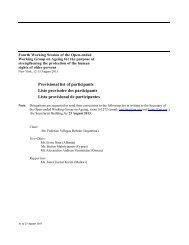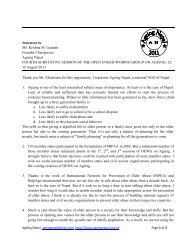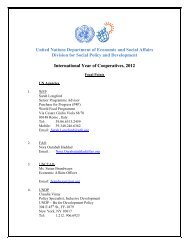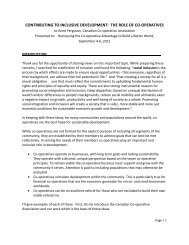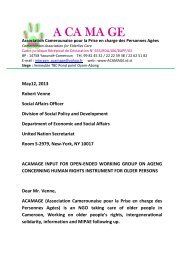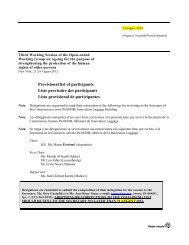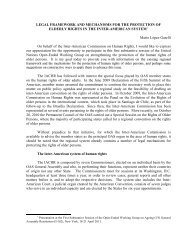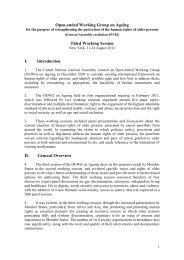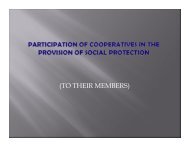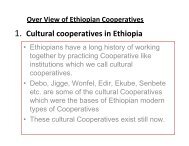Audit of Residential Facilities, Final report - Division for Social Policy ...
Audit of Residential Facilities, Final report - Division for Social Policy ...
Audit of Residential Facilities, Final report - Division for Social Policy ...
Create successful ePaper yourself
Turn your PDF publications into a flip-book with our unique Google optimized e-Paper software.
The homes that fall under the umbrella <strong>of</strong> larger NGOs such as the ACVV or the SAVF aregenerally better managed because <strong>of</strong> the support structure that the "mother body" provides. Itwas clear that many independent homes have a need <strong>for</strong> such assistance especially if theirboards are unable to provide this support.In a few black-run homes, the managers did not have the capacity to manage the homes properlyand in some there were allegations <strong>of</strong> mismanagement and fraud. This points to both the lack <strong>of</strong>capacity <strong>of</strong> Boards to provide the necessary oversight but in some cases also the lack <strong>of</strong>management capacity, understanding and experience in these homes about transparent andaccountable management.Role: the management <strong>of</strong> staff is generally a difficult aspect and many homes <strong>report</strong> some type<strong>of</strong> difficulty around staff relations. The lack <strong>of</strong> management experience <strong>of</strong>ten meant thatmanagers did not fully grasp the opportunities to address issues such as effective peoplemanagement,conflict management and building a cohesive team. Most managers were notaware <strong>of</strong> diversity-related issues or if they were, this was not demonstrated. The result was in atleast 80% <strong>of</strong> the homes there were big differences between management and black staff. Asindicated earlier the black were largely silent in the group discussions but many requestedseparate meetings with the fieldworkers, and in cases where they were able to accommodate thisrequest, staff complained about unfair treatment and salary differentials between people involvedin the same job. In many homes the racial dynamics amongst staff was very obvious. White staffwas very amiable and complementary <strong>of</strong> management, and their interactions were more withmanagement than with their co-workers.There seemed to be a lack <strong>of</strong> proper and effective communication between staff andmanagement in a more general sense, and this was clear from staff in many homes not beingaware <strong>of</strong> policies and procedures that existed in the homes. This was also obvious as DSDindicated that they provided training to the management <strong>of</strong> the „mother bodies‟ who in turn shouldpass the in<strong>for</strong>mation on to other managers and staff in the homes, <strong>of</strong>ten this did not seem tohave happened and the in<strong>for</strong>mation was filed away.What made the situation in the majority <strong>of</strong> homes while management and senior staff weremainly white, the majority <strong>of</strong> junior staff, caregivers, nursing assistants and domestic staff wereprobably between 95-100% black. On querying this issue the answer was <strong>of</strong>ten “…we are unableto attract good black staff…” However, this practice served to entrench existing perceptions <strong>of</strong>racism and unequal treatment. In only one home in the Eastern Cape there was a manager and61 | D S D A u d i t o f R e s i d e n t i a l F a c i l i t i e s



